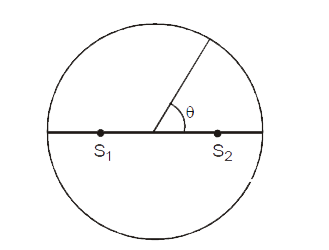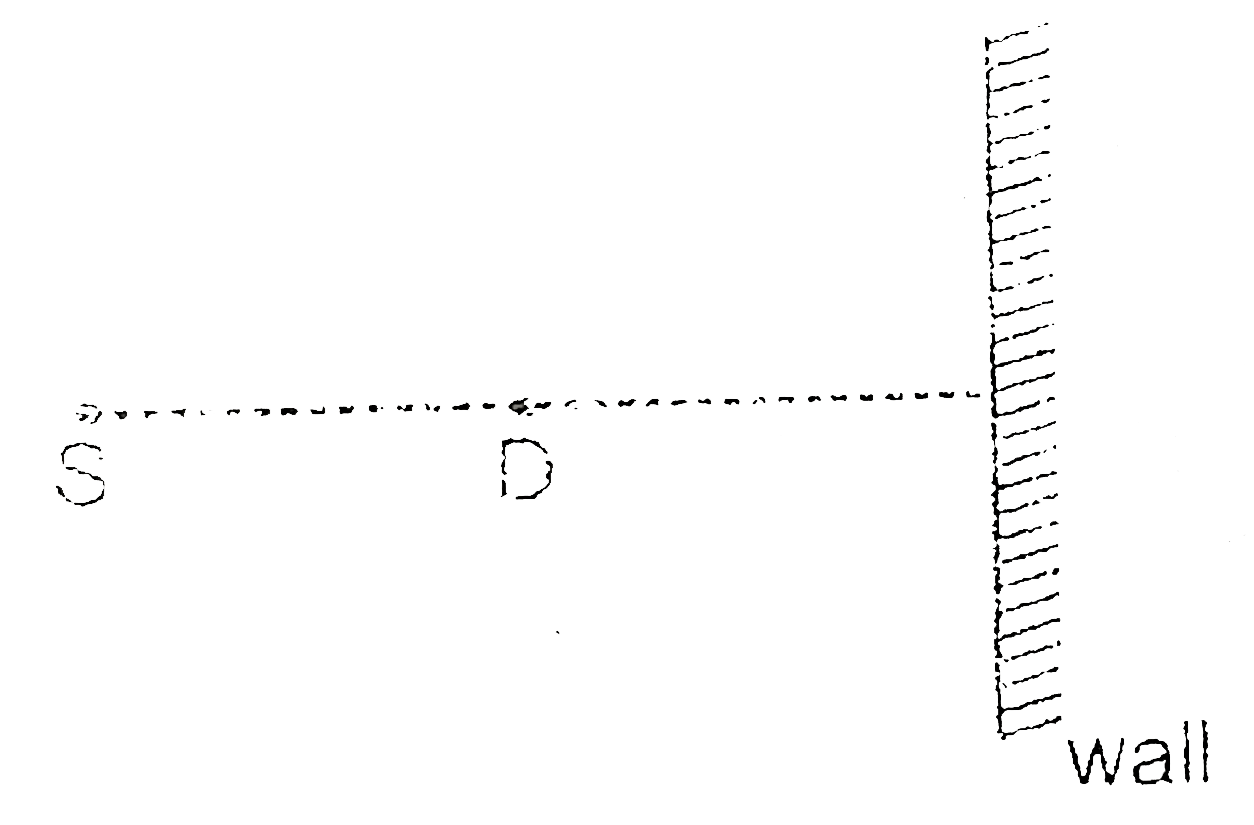In Quincke's tube a detector detects minimum intensity. Now one of the tube is displaced by 5 cm. During displacement detector detects maximum intensity 10 times, then finally a minimum intensity (when displacement is complete). The wavelength of sound is :
109 cm
1 cm
12 cm
59 cm
The correct Answer is:B
Step by step video, text & image solution for In Quincke's tube a detector detects minimum intensity. Now one of the tube is displaced by 5 cm. During displacement detector detects maximum intensity 10 times, then finally a minimum intensity (when displacement is complete). The wavelength of sound is : by Physics experts to help you in doubts & scoring excellent marks in Class 12 exams.
Updated on:21/07/2023Topper's Solved these Questions
- SOUND WAVESBOOK - MOTIONCHAPTER - SOUND WAVESEXERCISE - EXERCISE - 1 (SECTION D)
8 Videos
- SOUND WAVESBOOK - MOTIONCHAPTER - SOUND WAVESEXERCISE - EXERCISE - 2 ( LEVEL I SECTION A)
2 Videos
- SOUND WAVESBOOK - MOTIONCHAPTER - SOUND WAVESEXERCISE - EXERCISE - 1 (SECTION B)
9 Videos
- SIMPLE HARONIC MOTION BOOK - MOTIONCHAPTER - SIMPLE HARONIC MOTION EXERCISE - EXERCISE -4 (Leve-II) [ JEE 2011]
11 Videos
- SURFACE TENSIONBOOK - MOTIONCHAPTER - SURFACE TENSIONEXERCISE - Exercise - 3 | Section - B Previous Year Problems | AIEEE
12 Videos
Similar Questions
In a closed tube whose length can be altered by sliding one of the halves relative to other is shown in the figure. In the initial condition the dector detects minimum intensity. One of the tubes is then displaced by 5 cm, during this displacement detector detects maximum intensity for 10 times and then a minimum intensity when the displacement is complete. what is the wavelength of sound?

View SolutionTwo point sources of sound are placed at a distance d and a detector moves on a straight line parallel to the line joining the sources as shown in figure. At a distance D away from sources. Initially Detector is situated on the line so that it is equidistant from both the sources. Find the displacement of detector when it detects nth maximum sound and also find its displacement when it detects nth minimum sound.

View Solution
Knowledge Check
The distance between maximum and the next minimum displacement in a wave is 6cm. The wavelength of the wave is :
A6 cmB3 cmC12 cmD24 cmThe intensity of light emerging from one slit is nine times than that from the other slit in Young's double sit interference set up. The ratio of maximum intensity to minimum intensity in the fringe pattern is
A2:1B4:1C6:1D8:1Two waves of same frequency have amplitudes 5 cm and 3 cm, These waves are made to superpose in the same direction. The ratio of maximum intensity to minimum intensity at various places will be
A3:5B9:25C9:4D16:1
Two point sources ofsound are placed at a distance d and a detector moves on a straight line parallel to the line joining the sources as shown in figure-6.27 at a distance D away from sources. Initially Detector is situated on the line so that it is equidistant from both the sources. Find the displacement of detector when it detects nth maximum sound and also find its displacement when it detects nth minimum sound.

View SolutionTwo sources A and B give out sound waves in coherence and in phase. The sources are located at co-ordinates (0,0) and (0,9m) in xy plane. There is a detector located at (40m,0). It was found that the detector records continuous increase in intensity of sound when it is moved in positive y-direction for 4.5m but the intensity was found to fall for some distance when it is moved in negative y direction. What frequency of sound is consistent with these observations? Speed of sound =340ms–1.
View SolutionA sound sources, detector and a movable wall are arranged as shown in figure. In this arrangement detectir us detacting the maximum intensity. If the speed of sound is 330m/s in air and frequency of source is 660Hz, then find the minimum distance by which the wall should be moved away from source, so that detector dtects minimmum intensity.

View SolutionThe ratio of intensities between two coherent sound sources is 4:1 the difference of loudness in decibels between maximum and minimum intensities, when they interfere in space, is
View SolutionThe ratio of intensities between two coherent sound sources is 4:1 the difference of loudness in decibels between maximum and minimum intensities, when they interfere in space, is
View Solution
